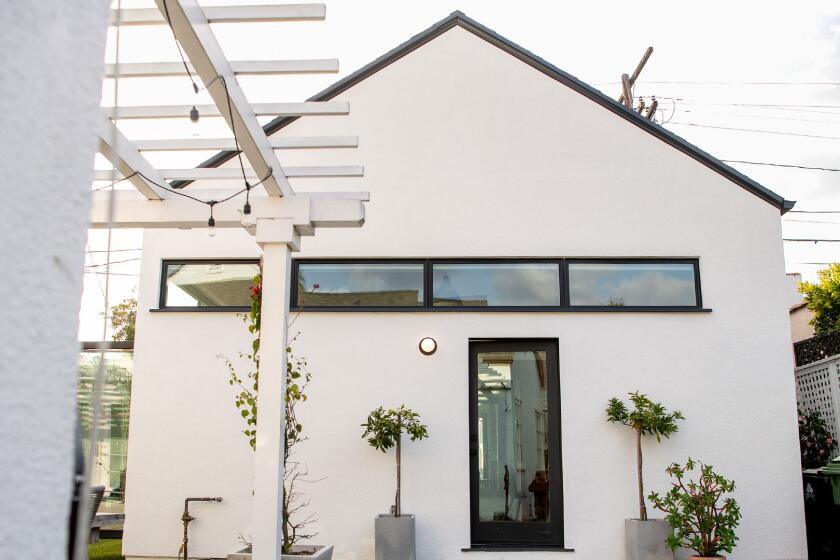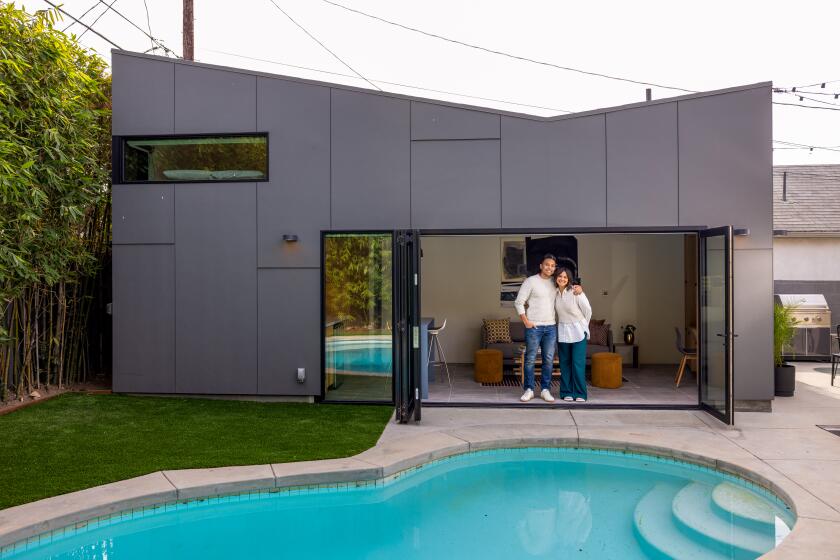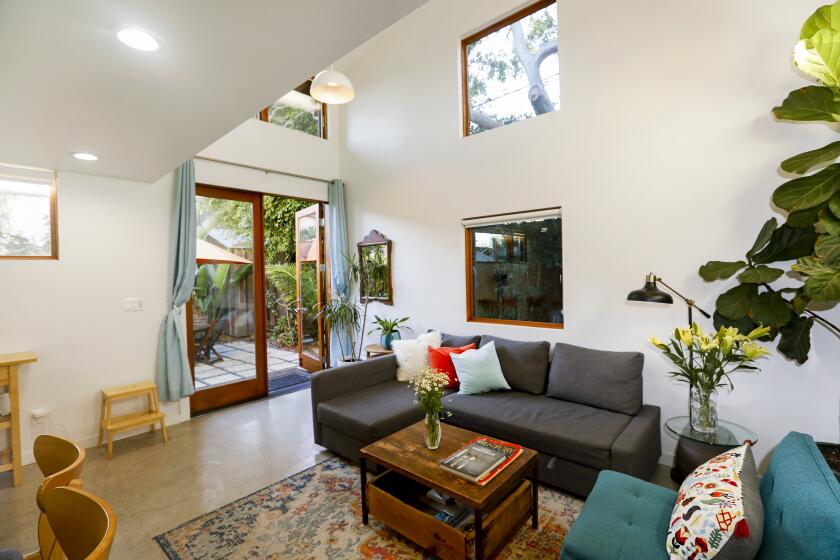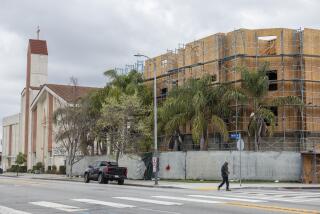Building an ADU? What you need to know about rent control
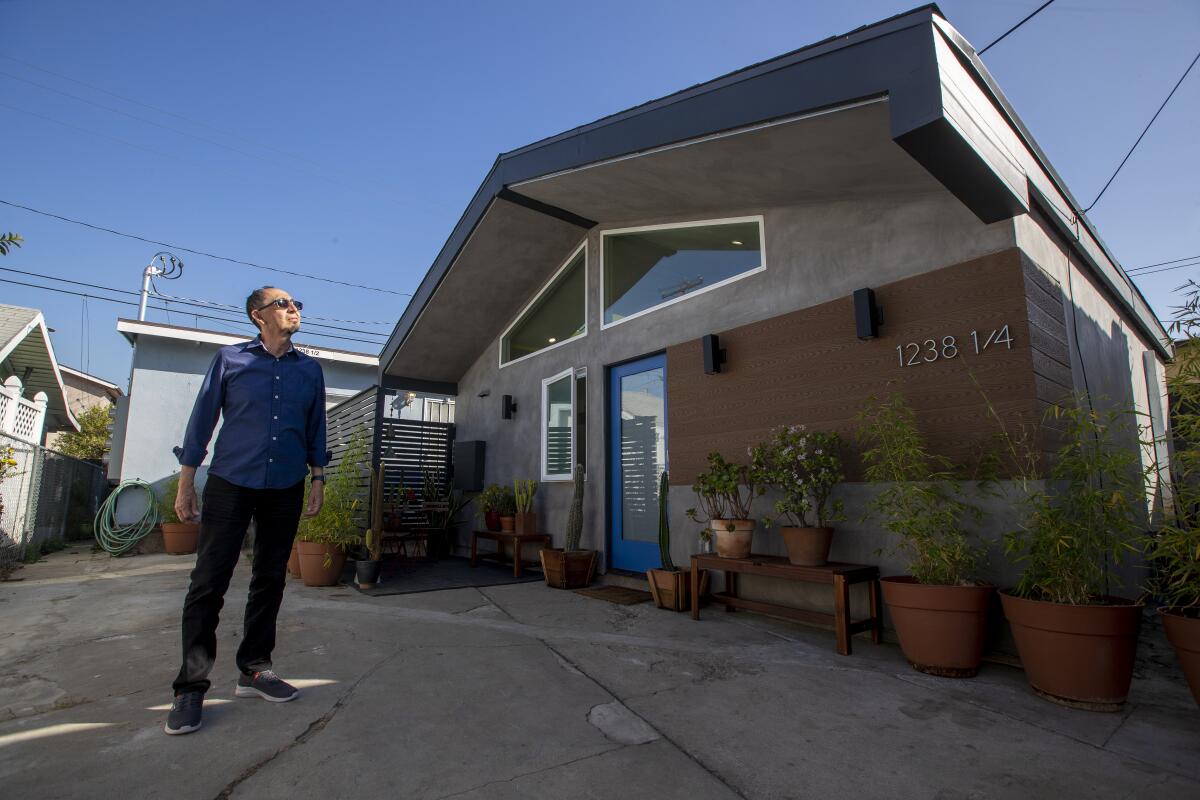
Hoping to boost the supply of housing, California has made it far easier for homeowners to build accessory dwelling units, better known as granny flats or ADUs. But an ADU could bring an unexpected wrinkle to your property along with the new tenants: rent control.
A new ADU probably wouldn’t be covered by rent control unless it was in the city of Los Angeles, where an emergency COVID-19 order has temporarily frozen rents on all properties. But a limit on rent increases could go into effect immediately on a single-family house on the same lot as a new ADU, even if it previously had been exempt.
In some cities, the house would also be subject to restrictions on evictions and other tenant protections.
That’s no big deal if you live in that house, as many people who build ADUs do. But state law also encourages people who rent out single-family homes to build ADUs on their lots, and doing so could cause rent regulations to kick in — and if there is a local rent stabilization ordinance, requirements to register your rental property, pay fees and report vacancies.
Why? Legal experts say building an ADU converts a single-family property into a multifamily one because the two structures share the lot and cannot be sold separately. That shift from single-family to multifamily is what brings into play a new state tenant protection law and some cities’ ordinances, which wouldn’t otherwise apply to single-family homes.
By the way, ADUs can also be added to multifamily properties. But those may already be subject to rent-control rules, depending on where they are and when they were built.
Overlapping state, county and city laws have created a confusing patchwork of rent-control and tenant-protection rules for ADUs. The various emergency orders issued to help renters through the pandemic have only added to the complexity.
Here are the main factors affecting whether rent controls will apply to your property after you build an ADU.
California homeowners have the right to build at least two ADUs on their property. But naturally, there are rules and costs. Here’s a guide.
Your location
The state enacted a new tenant protection and rent-control law, Assembly Bill 1482, in 2019. That governs all parts of California that don’t have local rent stabilization ordinances, including Pasadena, Long Beach, Lancaster and Torrance. In the 20 or so cities and counties that have their own controls, including Los Angeles, Inglewood and Santa Monica, the state’s rent caps apply just to properties built after the local rules elapsed.
Under AB 1482, landlords can raise rents each year by 5% plus the rate of inflation in their metropolitan area, up to a maximum of 10%. But the limit applies only to structures that are at least 15 years old, and it’s due to expire in 2030, before it would go into effect on a brand new ADU.
The limit would apply immediately to a house on the same lot as the new ADU, but again, only if the house is more than 15 years old, legal experts say. And even those homes would be exempt from the eviction limits in AB 1482 if they are owner-occupied; otherwise, tenants could not be evicted without just cause.
The state law does not preempt local ordinances that have more stringent limits on rent increases. Which properties are covered, however, will vary from city to city.
For example, L.A. County’s ordinance, which applies to rental properties in unincorporated areas, explicitly excludes single-family homes. But ADUs first occupied before Feb. 1, 1995, are covered, regardless of whether the structure was permitted. ADUs issued a certificate of occupancy after that date are covered by the state law.
In Santa Monica, meanwhile, the local rent-control measure applies to many single-family rental homes built before 1979, but exemptions are available for those not rented on July 1, 1984, or that have been owner-occupied for two years. Exemptions are also available for owner-occupied properties with no more than three units. Adding an ADU to an exempt pre-1979 home you live in there wouldn’t make your property subject to rent control unless it created a fourth unit, said Daniel J. Costello, a city spokesman.
To know which rules will apply to your property, check your local government’s website to see if there is a local rent stabilization ordinance.
Even if your ADU or rental house is exempt from rent control, AB 1482 still requires you to notify tenants in writing that the unit isn’t subject to state tenant protections or limits on rent increases.
Small-space living doesn’t mean you have to sacrifice style or succumb to clutter.
The year your house and ADU were built
The new state law exempts units that are less than 15 years old. So if your house or ADU is 10 years old, the rent limits will kick in five years from now.
The rent limits set by local laws apply only to considerably older rental properties. That’s because state law (the Costa-Hawkins Act) bars local governments from imposing rent controls on units built after Feb. 1, 1995, unless the new units replaced older ones that were rent controlled.
So local limits on rent increases probably will never apply to your new or recently constructed ADU if you rent it out. The exception, again, is when the ADU replaces a garage, bedroom or other structure on a rent-controlled property. And whether the local limits apply to your house depends largely on whether it was built before those limits lapsed.
In the city of Los Angeles, for example, rent controls apply only to dwellings built before October 1978. In San Francisco, the cutoff date is June 13, 1979. In Oakland, it’s Jan. 1, 1983.
Costa-Hawkins restricts only rent controls, not eviction limits and other tenant protections. So more recently built houses and ADUs may fall under those local restrictions, along with other municipal requirements for landlords.
Architect Isabelle Duvivier designed an ADU that thoughtfully preserves the tree canopy.
The type of ADU you build
Whether the ADU is attached to your house is an important distinction in the city of Los Angeles. If you build an ADU in L.A. that’s completely detached, it will be exempt from the local rent stabilization ordinance unless the ADU took the place of units that had been rent-controlled. The house, meanwhile, will fall under the city ordinance if it was built before October 1978.
If your ADU is attached to a house built before October 1978, both the house and the ADU will fall under the city’s ordinance. According to the city housing department, however, the rent limits won’t apply to a new ADU because of Costa-Hawkins. Instead, the ADU will have to comply just with the other tenant protections, such as the restrictions on evictions.
Richard Saghian, chief executive and founder of the online retailer Fashion Nova, confirmed to The Times that he submitted the winning bid for The One — the biggest residence in Los Angeles.
More to Read
Sign up for Essential California
The most important California stories and recommendations in your inbox every morning.
You may occasionally receive promotional content from the Los Angeles Times.
